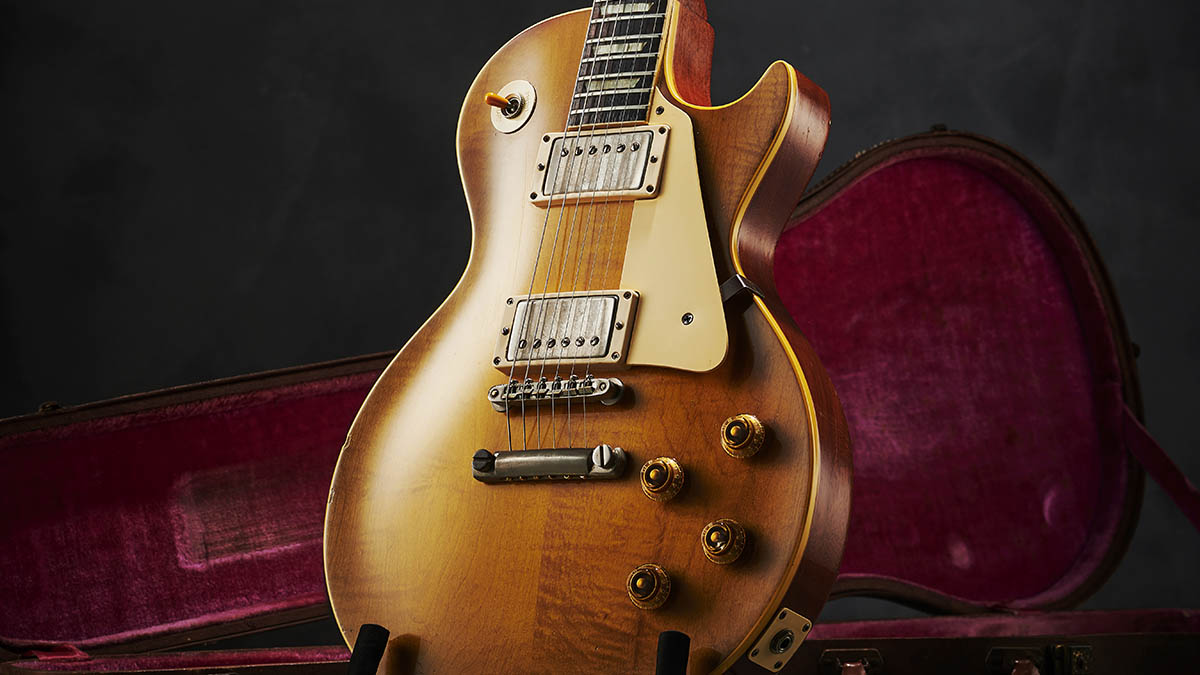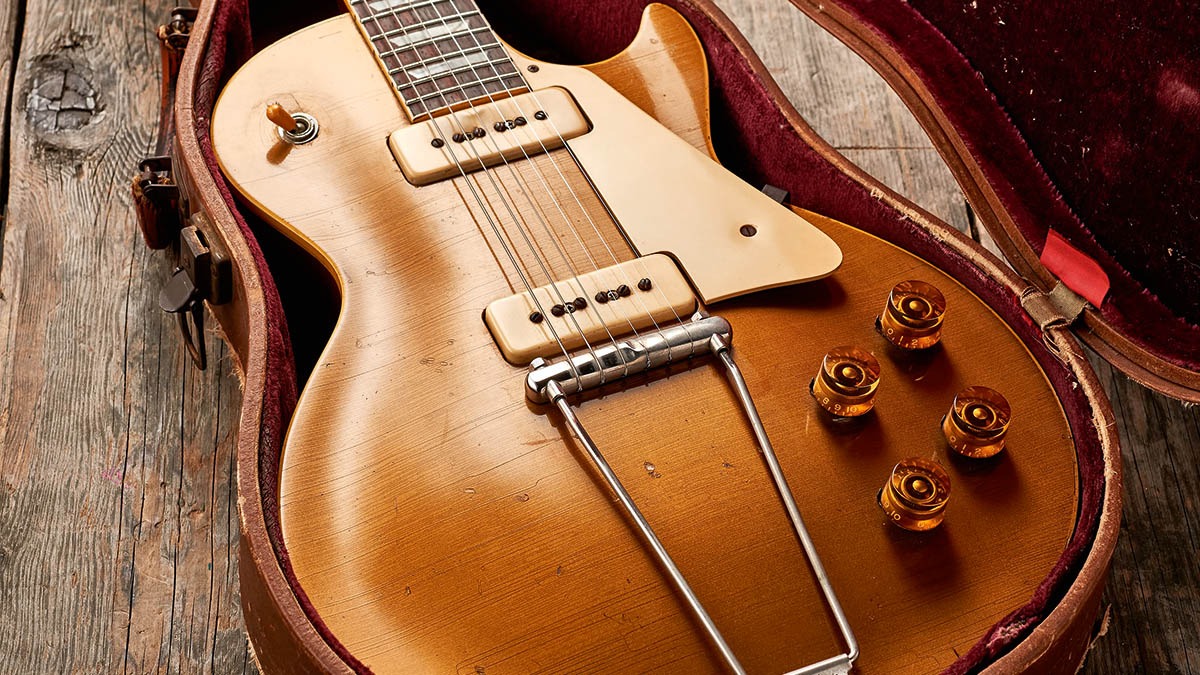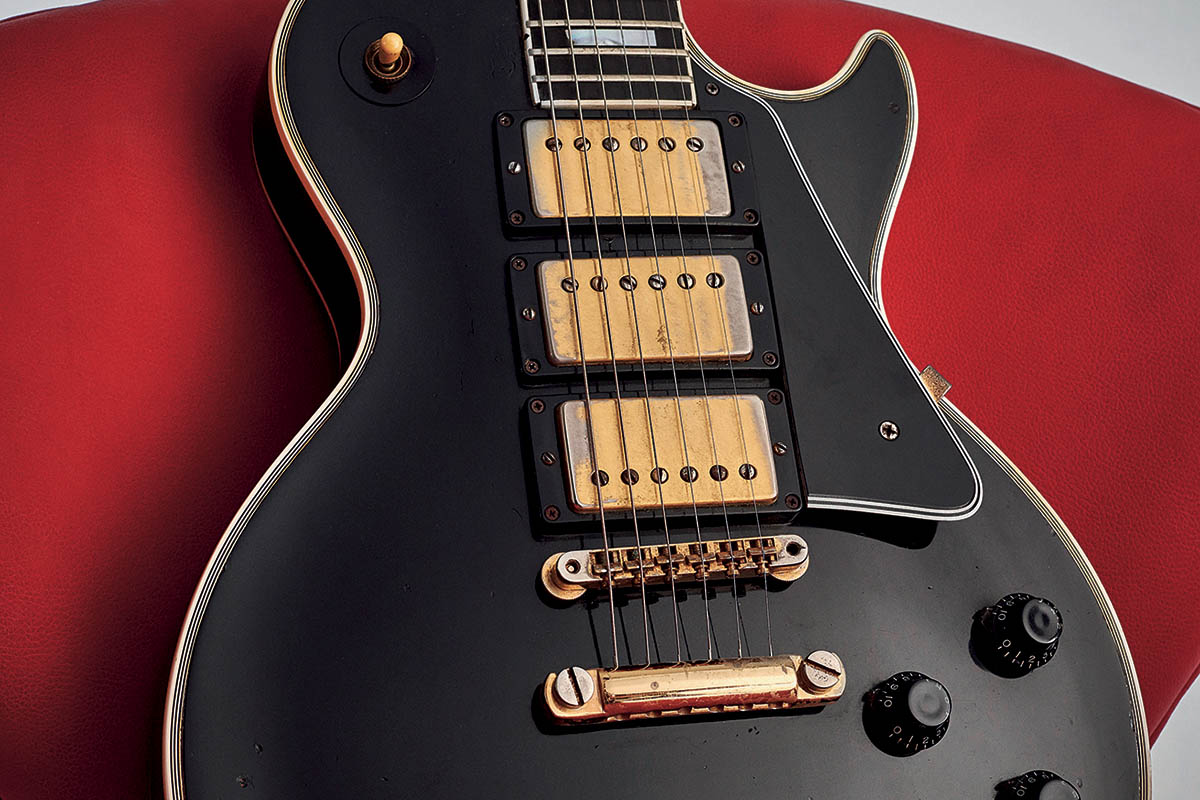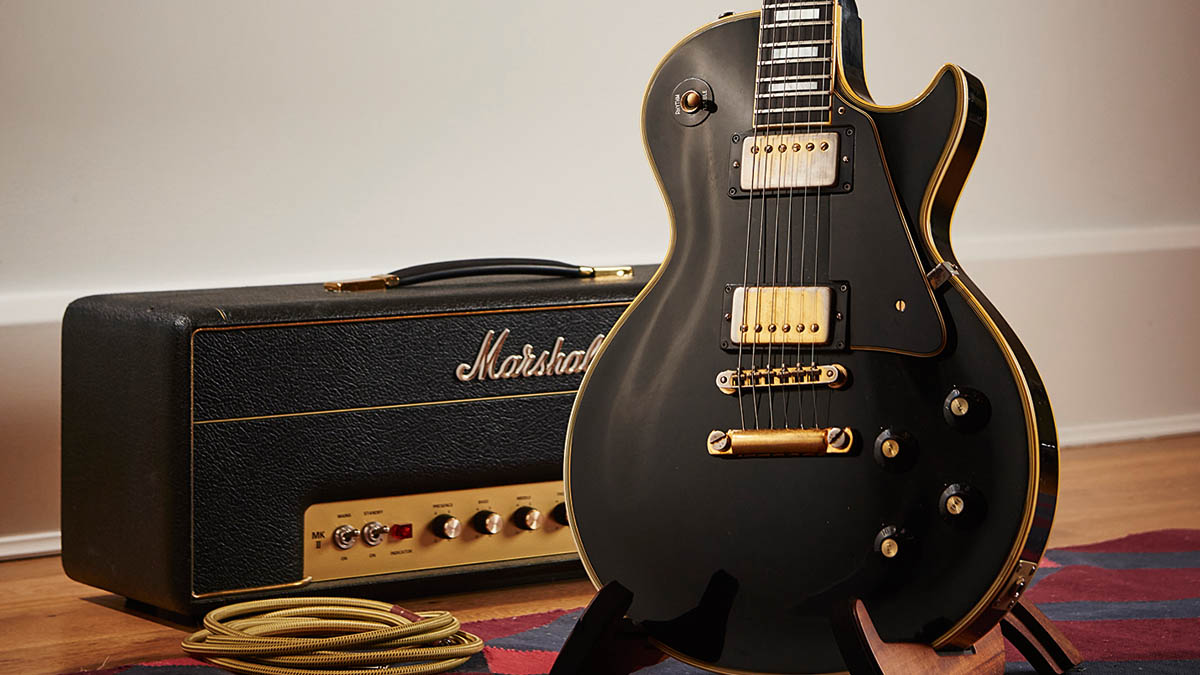The evolution of the Les Paul: how Gibson’s single-cut design developed from 1952 to 1978
We chart the key changes the Les Paul and its variants went through in its seminal early years

The Gibson Les Paul was launched in 1952 with a multi-section maple top, mahogany body and neck. Gold-finished top (a few had gold back and sides also), twin soapbar P-90s, trapeze tailpiece. Shallow-angle neck-set means strings have to wrap under bridge, preventing palm muting, to make setup geometry work – turning a good bridge design into a flawed one.
Shallow neck-set also made later conversion to stopbar tailpiece or Tune-o-matic problematic. Single-ply cream binding – though very earliest models omit neck binding. Single-ring Kluson tuners with no brand name. Tall ‘barrel’ control knobs. Silk-screen ‘Les Paul Model logo on headstock’.
1953
Goldtop Les Paul upgraded with single-piece wrapover bridge and new raked-back neck-set geometry, with trapeze tailpiece discontinued – though some guitars produced in early ’53 still made to 1952 spec. Neck-set angle increases slightly up to 1954. Serial number on reverse of headstock. Gold ‘barrel’ control knobs reduced in height.

1954
Les Paul Custom launched with mahogany carved top, neck and body. Alnico V pickup at neck and P-90 at bridge, black covers. First appearance of ABR-1 bridge. Low ‘fretless wonder’ frets, bound ebony fretboard. Black finish and multi-ply binding, gold-plated hardware, split diamond inlay on headstock.
Les Paul Junior launched. Single-cut, slab mahogany body, 24.75-inch scale and one P-90. Two-colour sunburst finish.
Les Paul TV model launched: essentially yellow-finish Junior but very early models had maple body and ¾-size scale length.
1955
Adjustable ABR-1 bridge replaced wrapover bridge on goldtop Les Paul Model in autumn. Gibson logo moved up headstock. Control knobs changed to familiar ‘top hat’ shape with curved sides.
All the latest guitar news, interviews, lessons, reviews, deals and more, direct to your inbox!
Les Paul TV model increased to 24.75-inch scale. Mahogany body from late ’55.
Les Paul Special launched featuring a mahogany body and neck, two soapbar P-90s, rosewood ’board and wrapover bridge. Available in TV Yellow.
1956
Sprague ‘Bumble Bee’ capacitors replaced earlier Sprague ‘Grey Tiger’ caps in wiring looms of goldtop Les Paul Model.
Les Paul Junior pickup moved forward slightly to stand clear of bridge posts.
1957
Humbucking Patent Applied For (PAF) pickups replaced soapbar P-90s on Les Paul Model with DC resistance typically within a 7 to 9kohms range. Some examples built with dark back and sides finish (and yellow serial for legibility), but the majority have natural mahogany finish back and sides.
Earliest PAFs fitted to Goldtops feature stainless-steel covers before moving to nickel-plated ones. Early humbucking Les Pauls feature black plastic parts, including M-69 pickup rings, pickguard and so on (typically with matching black back and sides on the guitar), though cream plastics replaced these relatively quickly.
Les Paul Custom switched to three humbucking pickups.

1958
Sunburst-finish Les Paul Standard introduced (note the name change from ‘Les Paul Model’). Two-piece, centre-seam maple top, cherry-tint back and sides, and the Cherry Sunburst finish features a more vibrant red tint than 1959 examples.
Relatively few were made with notably figured tops (circa 15 per cent) and around the same proportion were factory fitted with Bigsby B-7 vibrato.
Les Paul Junior body changed to rounded, double-cutaway design (as does TV Model). Pickguard now tortoiseshell instead of black. Cherry finish.

1959
Fret size increased on Les Paul Standard, neck profile slightly less chubby than 1958 examples, red of sunburst subtler – some examples in Tobacco Sunburst made.
Pickup bobbins white or ‘zebra’, though if the latter the bobbin with adjustable poles always black. Square-cornered jack plate fitted, along with small changes to plastics including ring around pickup selector, which becomes thinner, with different font.
Les Paul Custom fitted with Grover Rotomatic tuners.
1960
Sunburst finish changed due to introduction of new red dyes less sensitive to light damage, assuming a now-famous ‘tomato soup’ hue. Control knobs changed to ‘reflector’ type with metal cap, replacing the earlier top-hat knobs with clear plastic tops.
Neck profile became slimmer. White bobbins on pickups phased out. Note, the earliest 1960 Les Pauls were built to same spec as 1959 examples.
1961
Model changed completely to ‘Les Paul/SG’ type double-cut design featuring thin mahogany body and bevelled edges plus ‘sideways’ Vibrola. Les Paul’s name still appeared on truss‑rod cover, however.
Les Paul Custom line also changed to SG-style body with white finish.

1963
Les Paul Standard model officially discontinued, but, in reality, the then-current SG-style Les Paul Standard simply became the ‘SG Standard’.
1968
Single-cut Les Paul Standard model reintroduced as a reissue of the 1956-spec P-90 Goldtop, though with numerous alterations. Metal parts now chrome instead of nickel-plated, fingerboard Indian rosewood not Brazilian, serial number stamped not inked on headstock reverse. Sprague ‘Black Beauty’ or brown-disc capacitors.
Les Paul Custom also reintroduced with two humbucking pickups ‘amplifier’-style control knobs, shallower headstock back angle (14 degrees instead of 17 degrees), maple top on mahogany body and long-tenon neck joint.

1969
Les Paul Deluxe introduced. Features four-piece ‘pancake’ body construction comprising a maple top, a thick upper section of mahogany, a thin layer of maple then a thick lower section of mahogany, arranged pancake-wise. Two mini-humbuckers instead of P-90s, goldtop finish. Three-piece mahogany neck with volute.
Les Paul Custom also received ‘pancake’ body construction and three‑piece maple neck with volute.
Les Paul Standard reissued in 1954 spec, with wraparound tailpiece and two P-90s with ‘Gibson’ on the covers. No volute.
1971
Les Paul Deluxe offered in Cherry Sunburst and Cherry Red finishes.
1976
Les Paul Standard built with four-piece pancake construction (maple/mahogany/maple/mahogany), three-piece maple top, two humbuckers, Tune-o-matic bridge. Offered in Wine Red, Natural, Tobacco Sunburst and Cherry Sunburst finishes.
1978
Two-piece body with maple top. Goldtop finish now also available.
Jamie Dickson is Editor-in-Chief of Guitarist magazine, Britain's best-selling and longest-running monthly for guitar players. He started his career at the Daily Telegraph in London, where his first assignment was interviewing blue-eyed soul legend Robert Palmer, going on to become a full-time author on music, writing for benchmark references such as 1001 Albums You Must Hear Before You Die and Dorling Kindersley's How To Play Guitar Step By Step. He joined Guitarist in 2011 and since then it has been his privilege to interview everyone from B.B. King to St. Vincent for Guitarist's readers, while sharing insights into scores of historic guitars, from Rory Gallagher's '61 Strat to the first Martin D-28 ever made.




